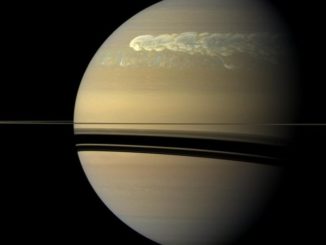
Month: March 2018


The Crab Nebula in all its spectacular multi-wavelength glory
A newly processed view of the Crab Nebula, combining X-ray emissions, ultraviolet, optical, infrared and radio emissions using five different telescopes, reveals an astonishing level of detail in the evolving supernova blast, a complex tapestry of debris powered by a fast-spinning pulsar, the collapsed remnant of the destroyed star.





See Mercury at its best, Venus and a young Moon in the March evening sky
Mercury attains a greatest easterly elongation of 18 degrees from the Sun on 15 March, the innermost planet’s best evening showing for Northern Hemisphere observers for the entire year. From 12–20 March, planets Mercury and Venus remain just 4 degrees apart low in the west 45 minutes after sunset as seen from the British Isles.

A ringside seat for a slow-motion galactic train wreck
The Hubble Space Telescope captures a snapshot of a collision between two galaxies 350 million light years away in the constellation Cetus, giving astronomers a ringside seat to a slow-motion merger that eventually will result in a single combined galaxy. Gravitational interactions are distorting the barred spirals, ripping away stars and dust.


Saturn’s ‘Great Northern Storm’ still an awesome sight to behold
For reasons not yet understood, Saturn seems to store energy in its atmosphere over decades before suddenly releasing it in massive lightning storms that affect the ringed planet’s atmosphere across enormous distances. The Great Northern Storm of 2010/11 circled Saturn like a snake eating its tail, persisting for months before dissipating.
